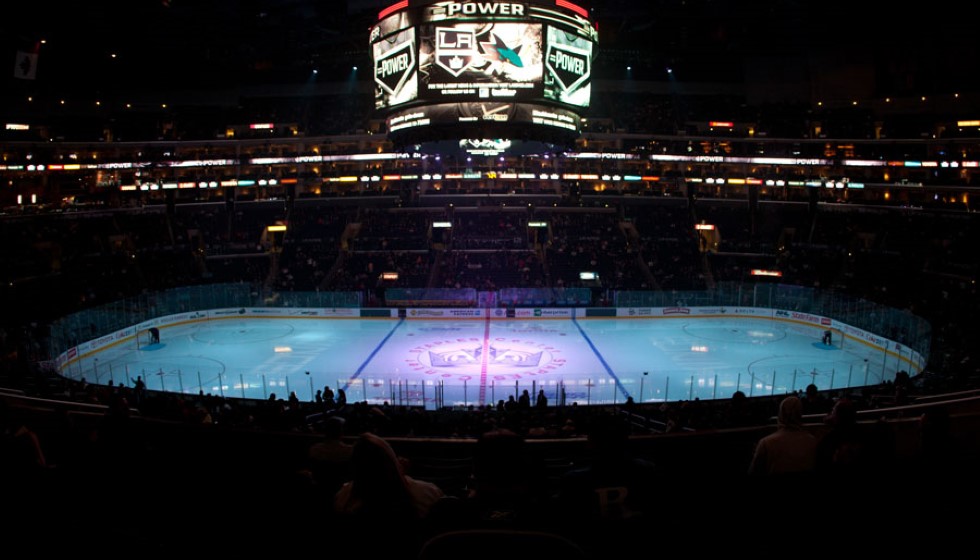
Mid-Season NHL Dynamics: An Analytical Overview
As the NHL reaches its midpoint in the 2024-25 season, teams are solidifying their standings and strategizing for the playoffs. The Edmonton Oilers present an intriguing paradox. They rank fourth in high-danger scoring chances per game, yet they find themselves 22nd in shooting accuracy. This combination suggests a team that creates numerous opportunities but struggles to capitalize, a situation that could be pivotal as they approach the latter half of the season.
In Los Angeles, strategic maneuvers are in play as the Kings consider acquiring a scoring juggernaut before the trade deadline. Such a move could significantly bolster their lineup and alter the competitive landscape as the playoffs loom. Meanwhile, in Toronto, the Maple Leafs' attention is firmly set on ensuring Auston Matthews returns to prime condition—a critical focus given his potential impact on their postseason ambitions.
The Las Vegas Golden Knights, known for their exceptional power plays, face the unique challenge of optimizing limited opportunities each game. This limitation highlights a need for efficiency, emphasizing quality over quantity in their power-play strategy. Contrastingly, the Winnipeg Jets soar through the season with remarkable form, currently standing as one of the league's most formidable teams.
On the East Coast, the Washington Capitals center their efforts on helping the legendary Alex Ovechkin surpass Wayne Gretzky’s all-time goals record. Achieving this milestone would mark an extraordinary chapter in hockey history, one that could provide added motivation to the Capitals' playoff aspirations.
Success in goaltending strategy is evident in the Colorado Avalanche's recent performance. With Mackenzie Blackwood and Scott Wedgewood making substantial contributions, the Avalanche have revitalized their approach between the pipes—a development that could prove decisive against high-octane opponents.
The New Jersey Devils harbor ambitions of lifting the Stanley Cup, boasting a well-rounded team eager to achieve glory. Concurrently, the Florida Panthers, free from a post-championship malaise, continue to perform well, demonstrating resilience and capability to defend their title.
Adversity challenges several NHL teams in various forms. The Minnesota Wild have notably slumped in scoring performance, affecting their aspirations. Similarly, the Tampa Bay Lightning confront the realities of an aging core, with key players like Nikita Kucherov and Victor Hedman entering their thirties. Across the league, the Dallas Stars find themselves struggling to meet expectations, their youthful roster perhaps requiring more time to gel.
Among the northeastern competitors, the Ottawa Senators ended December positively and currently vie for a playoff spot. A critical piece of their campaign will be maintaining momentum as they continue to showcase potential. For the Carolina Hurricanes, revitalizing Martin Necas' form will be central to their playoff contention strategy, as individual performance feeds into overall team success.
On the other hand, the Vancouver Canucks grapple with unspecified challenges impacting their performance. In Boston, the Bruins navigate difficulties concerning their team centers, necessitating strategic adjustments. The Pittsburgh Penguins find themselves on the opposite end of defensive success, leading the league in goals allowed, highlighting an area of urgent improvement.
The Calgary Flames are investing in their future with a long-term rebuilding strategy, a decision that reflects both foresight and patience. Meanwhile, the Columbus Blue Jackets have exceeded critics’ expectations thus far, edging closer to playoff relevancy.
Struggles with special teams plague the New York Islanders, whose last-place ranking in this sector demands urgent addressing. In contrast, the Montreal Canadiens are incrementally advancing in their rebuilding efforts, while the Seattle Kraken benefit from strategic free-agent acquisitions, including the impactful Chandler Stephenson.
Challenges persist for the Detroit Red Wings, particularly within their penalty kill unit. Similarly, both the Nashville Predators and Chicago Blackhawks face difficulties in goal production, emphasizing the need for offensive recalibration. Meanwhile, the New York Rangers contend with injuries and trade rumors, factors that could influence their roster stability and performance as the season progresses.
Turning an eye to the future, the San Jose Sharks focus on developing their prospects, investing in emerging talent to secure long-term success. This approach mirrors the philosophy of building a sustainable competitive structure in an ever-evolving league.
As each team navigates the complexities of the midseason, the stage is set for a thrilling second half. Whether through tactical trades, player development, or strategic reshuffles, the NHL landscape remains one of dynamic shifts and relentless competition.